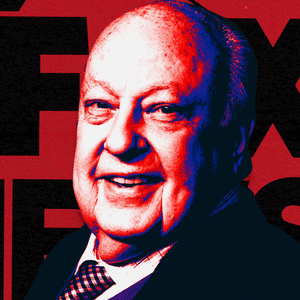By the time Hillary Clinton delivered a campaign speech on the “alt-right” in August 2016, there was no returning the controversial term to the dregs of the internet.
An amorphous movement of fascists, white supremacists, and misogynist trolls, the alt-right had simmered in online forums for years before riding into the mainstream on a rising tide of racism, fueled in part by Donald Trump’s presidential campaign. While some alt-righters’ aims might have been no different than those of the Ku Klux Klan, this younger movement was web-savvier than its forebears, cloaking bigotry in memes and ironic humor. This was White Supremacy 2.0.
White nationalist Richard Spencer claims credit for the term “alt-right,” which he hoped would give the movement an air of legitimacy and take the focus off its hardcore racist adherents. Speaking to HuffPost shortly before the 2016 presidential election, Spencer said he saw a path forward in the racist, anti-feminist resentment stoked by far-right news outlet Breitbart and its then-star Milo Yiannopoulos, who had whipped misogynist nerds into a frenzy during the trolling campaign Gamergate several years earlier.
“What we should do is basically ride [Yiannopoulos’] coattails,” Spencer told HuffPost. “If I wanted to create a movement that was 1488 [a neo-Nazi slogan] white nationalist, I would have done that. But I didn’t because I recognized that is a total nonstarter. No one outside a hardcore coterie would identify with it.”
In practice, of course, the alt-right was welcoming of and sometimes indistinguishable from neo-Nazism. Take Spencer, who advocates “peaceful ethnic cleansing,” invoked Nazi slogans in a pro-Trump speech, and was greeted with Nazi salutes. And Breitbart was introducing alt-righters to real power. Breitbart executive chairman Steve Bannon, who declared the site “the platform for the alt-right,” became chief executive of Trump’s presidential campaign, which had championed racism from its first moments, when Trump smeared Mexicans as rapists in his announcement speech.
When Clinton addressed Trump’s ties to the alt-right in her August speech, the movement rejoiced. They’d arrived on the main stage of American politics. When Trump won the election months later, alt-right message boards exploded. “We actually elected a meme as president,” a 4channer wrote. He meant it as a compliment.
But the hatemonger movement proved difficult to marshal. Over the first year of Trump’s presidency, the alt-right was marred by factionalism: boots-on-the-ground Nazis arguing with white nationalist think-tanks arguing with 8chan trolls over the best way to consolidate power. Large segments of the movement agreed to come together in a rally called Unite the Right in Charlottesville, Virginia in August 2017.
The rally ended in terror when a neo-Nazi drove a car into a crowd of anti-racist activists, killing Charlottesville local Heather Heyer. The ensuing months and lawsuits saw the alt-right in chaos as its leaders turned on each other, went to jail, or slithered out of the public eye. Spencer cancelled a speaking tour, citing too many protests against him. An up-and-coming neo-Nazi group imploded over an intra-familial sex scandal.
A sequel Unite the Right rally in August 2018 saw only a handful of attendees. The “alt-right” banner, originally designed to disguise bigotry, had become too toxic. The canniest fascist groups denounced the title and rebranded as “pro-white” or “pro-West” while pushing the same extreme-right, white nationalist goals.
The alt-right, in name, was dying. But with Trump in office, racist candidates campaigning across the country, and white nationalist rhetoric finding its way onto Fox News, the hatred has remained seated in power.
Keep Reading for more Daily Beast 10th Anniversary Coverage:








